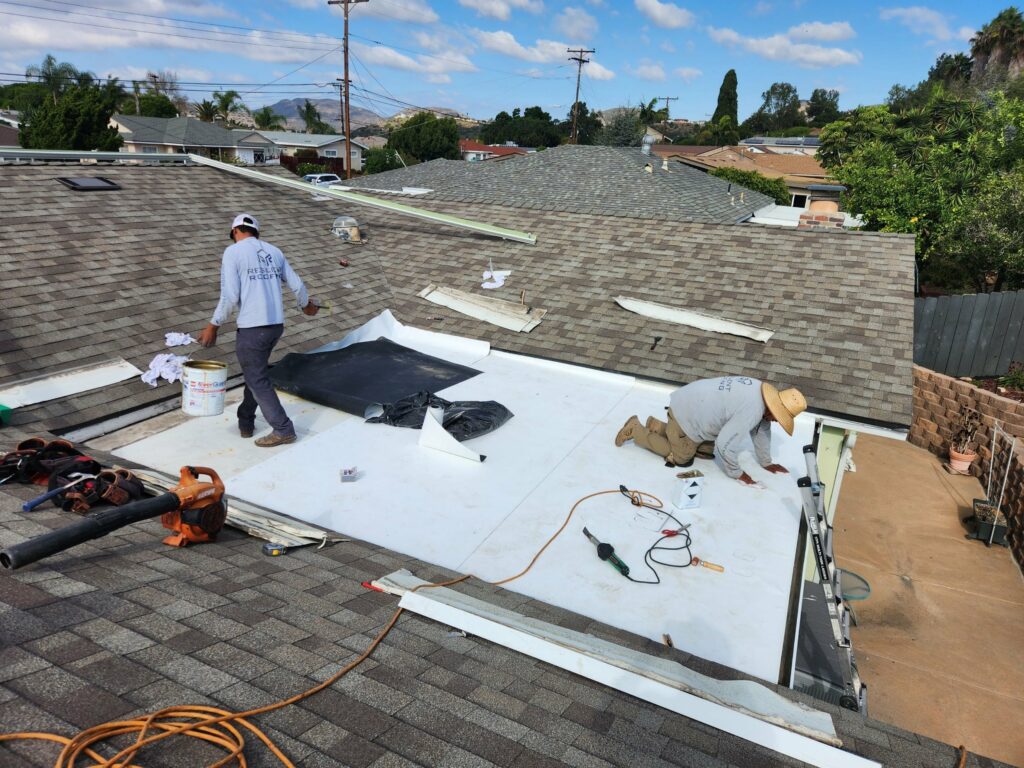Selecting the right roofing material for your commercial or industrial building is a significant decision. Among the various options available, thermoplastic olefin (TPO) flat roofing systems have gained popularity for their durability, energy efficiency, and cost-effectiveness. However, not all TPO roofs are the same, and choosing the right one for your specific needs is crucial. In this blog, we will guide you through the key factors to consider when selecting a TPO flat roof, helping you make an informed decision that ensures the longevity and performance of your investment.
What is TPO roofing?
Thermoplastic Olefin (TPO) roofing is a single-ply roofing membrane known for its exceptional strength and energy efficiency. It is a popular choice for flat or low-sloped roofs in commercial and industrial buildings due to its numerous benefits. TPO roofing is highly resistant to UV rays, heat, and chemical exposure, making it an ideal choice for a wide range of climates and industries.
Now, let’s explore the factors you should consider when choosing the right TPO flat roof for your specific needs.
- Climate Considerations:
The climate in your region plays a significant role in determining the type of TPO roofing you should choose. TPO roofing comes in various thicknesses, and selecting the right thickness can impact its performance and longevity. In areas with extreme weather conditions, including high temperatures and severe winters, thicker TPO membranes are recommended for better durability. - Color Options:
TPO roofing is available in a variety of colors, with white being the most popular due to its reflective properties. White TPO reflects sunlight and reduces heat absorption, leading to lower cooling costs. However, you can choose from a range of colors to match your building’s aesthetics, though it’s essential to consider the impact on energy efficiency. - UV Resistance:
TPO roofing is known for its excellent UV resistance, but not all TPO membranes are created equal. Ensure that the TPO roofing you select has been formulated for superior UV resistance to prevent premature degradation and maintain its integrity over time. - Reinforcement Type:
TPO membranes are available in both reinforced and unreinforced options. Reinforced TPO has an additional layer of polyester or fiberglass scrim, providing increased strength and stability. If your building experiences heavy foot traffic or is prone to punctures, reinforced TPO may be the better choice. - Warranty and Manufacturer:
Investigate the warranty offered by the TPO roofing manufacturer. A reliable manufacturer will stand by their product with a substantial warranty, giving you peace of mind about your investment. Research the reputation and history of the manufacturer to ensure their products have a track record of performance. - Energy Efficiency:
TPO roofing is known for its energy-efficient properties, but there are variations in thermal performance. Look for TPO membranes with high solar reflectance (SR) and high thermal emittance (TE) values. These properties will help keep your building cooler in hot weather, reducing the need for excessive air conditioning. - Installation Expertise:
Proper installation is key to the performance and longevity of your TPO flat roof. Ensure that you hire experienced and certified roofing professionals who are knowledgeable about TPO roofing systems. Improper installation can lead to leaks and other issues that may void your warranty. - Cost Considerations:
While TPO roofing is generally cost-effective compared to some other roofing materials, the initial cost can still vary depending on factors like membrane thickness, insulation requirements, and the complexity of the installation. Consider your budget constraints and weigh them against the long-term benefits of TPO roofing. - Maintenance Requirements:
TPO roofing is relatively low-maintenance, but regular inspections and maintenance are still essential to ensuring its longevity. Discuss maintenance requirements with your roofing contractor and create a maintenance plan to keep your TPO roof in excellent condition.
Conclusion
Choosing the right TPO flat roof in Ayden for your commercial or industrial building is a decision that should not be taken lightly. The factors mentioned above will help you make an informed choice that aligns with your climate, energy efficiency goals, and budget. Remember that the success of your TPO roofing system not only depends on the quality of the material but also on proper installation and maintenance. By investing in the right TPO roofing system and partnering with experienced roofing professionals, you can ensure the long-lasting protection and energy efficiency of your building.
Bryton Roofs https://brytonroofs.com/

